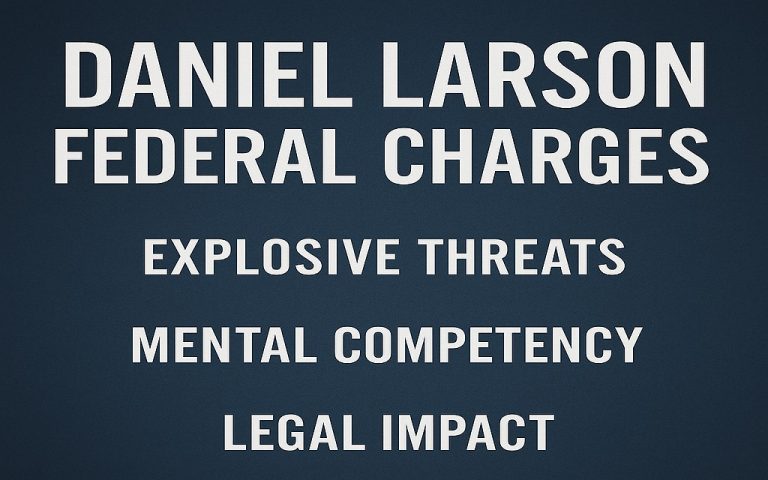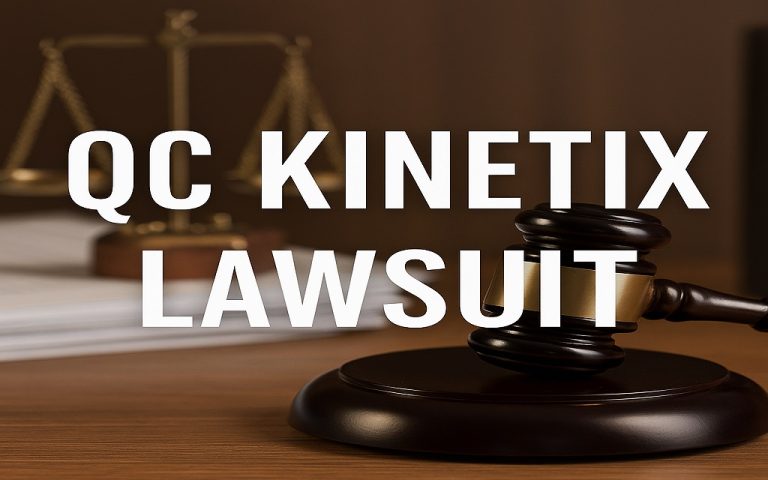Last updated: October 18, 2025
Disclaimer: This article is general information, not legal advice.
The Girl Scouts Cookies lawsuit of 2025 attracted strong public attention. Parents ask if cookies remain safe. Volunteers worry about trust. Shoppers want facts, not panic. Courts decide evidence, not headlines. This guide explains claims, responses, and context. You will see clear sections. Each part covers one core question. Practical tips appear near the end. Readers deserve short, direct sentences. Jargon stays minimal and defined. Sources should be credible and recent. Science needs nuance and fair limits. Law needs precise language and status notes. Policy needs timelines and next steps. The goal is calm clarity today.
At a glance
The case sits in federal court in Brooklyn. Plaintiffs say several cookie varieties contain heavy metals and glyphosate. Defendants include Girl Scouts of the USA and two licensed bakers. Relief requests include damages and label changes. A prior testing report anchors core allegations. That report came from advocacy groups, not government labs. Sample counts were small across product types. Experts questioned the standards used in comparisons. Many comparisons referenced drinking water thresholds.
Food exposure math works differently across time and servings. Company statements deny wrongdoing and highlight compliance programs. Regulators did not announce a recall. Journalists covered filings, responses, and debate points. Courts move through motions and schedules at their own pace. Class certification may arise later. Settlement talk could appear after discovery. Outcomes remain uncertain until rulings are issue. Readers should track new docket entries.
Case Snapshot
| Item | Detail |
|---|---|
| Court | U.S. District Court, Eastern District of New York |
| Status | Proposed class action; early stages |
| Allegations | Heavy metals and glyphosate in certain cookie varieties |
| Defendants | Girl Scouts of the USA; Ferrero U.S.A.; Interbake Foods (ABC Bakers) |
| Relief Sought | Damages; labeling changes; injunctive relief |
| Key Trigger | 2024 advocacy test report; small samples |
Note: Allegations are unproven until rulings issue.
What is the Girl Scouts Cookies Lawsuit?
The complaint frames consumer-protection and labeling claims. Plaintiffs argue that shoppers expected safe, contaminant-free treats. Alleged findings include four metals across the tested samples. Glyphosate traces appeared in each listed product, according to the report. The filing says defendants knew or should have known. Counts include deceptive acts and warranty theories. Requests include class certification and monetary relief. Label warnings and disclosures also appear in the prayer.
The pleading leans on advocacy testing from late 2024. Method summaries describe laboratory instruments and detection limits. Details matter because thresholds drive risk claims. The suit stresses children as a sensitive population. Exposure language focuses on repeated consumption. Defense teams will contest standing, causation, and damages. Motions may challenge testing reliability and comparisons. Courts often evaluate labeling in the full context. Preemption can arise when federal frameworks cover labels. Plaintiffs must connect tests to purchasing harm. Judges weigh plausibility before discovery expands.

Who is involved?
Plaintiffs include consumers who purchased popular flavors. Counsel seeks to represent a wider class of buyers. Defendants include Girl Scouts of the USA as brand steward. Two licensed bakers appear as manufacturers and suppliers. Those bakers produce and distribute distinct lines. Corporate roles matter for liability theories. The venue sits in the Eastern District of New York. That court handles many consumer cases each year. Judges manage consolidated timelines and motion practice.
Parties will exchange disclosures and discovery plans. Depositions may involve scientists and supply staff. Subpoenas could reach contract labs and ingredient vendors. Insurance coverage questions sometimes enter negotiations. Public relations considerations influence statements. Retailers watch developments for shelf decisions. Volunteers care about community trust. The broader Girl Scout movement values reputation and transparency. Every filing shapes strategy and settlement posture. Courts maintain public dockets for accountability.
What sparked the claims
Advocacy groups funded independent testing in 2024. Investigators collected cookie boxes across several states. Laboratories reported multiple metals in all samples. Glyphosate also appeared in every tested variety. Report authors compared some results against water limits. Water rules set numbers for continuous daily intake. Food uses serving-based exposure models instead. Critics highlighted the mismatch across metrics. Sample sizes concerned statisticians and toxicologists.
Packaging lots and batch dates were limited. Supply chains change across seasons and regions. Variability complicates broad conclusions about risk. Advocacy reports still influence public debate quickly. Media outlets amplified key charts and bullet points. Social channels carried simplified claims widely. Context fell away as posts spread. Lawsuits often follow such moments. Courts then examine methods and thresholds carefully. Plaintiffs referenced the report to frame counts and remedies. Defendants questioned the validity and relevance of the results. That clash now moves into formal proceedings.
What independent experts say
Independent chemists reviewed the advocacy report soon after its release. Analysts examined instruments, calibration, and detection limits. They assessed sampling scope and lot coverage. Many raised concerns about comparison choices. Drinking water standards do not translate cleanly to food. Exposure math considers body weight and intake over time. Dose makes the risk, not single detections alone. Experts noted metals appear naturally in soils. Crops may accumulate trace amounts across regions.
Chocolate and grains often carry background levels. Context, therefore, matters for any cookie discussion. Reviewers asked for validated methods and controls. Blind duplicates improve confidence in reported values. Accredited laboratories document uncertainty and quality checks. Peer review strengthens interpretations across audiences. Scientists recommended larger, stratified samples. Broader lot coverage reduces selection bias. Such steps would help courts and consumers. Clarity improves when reports share complete protocols. Transparency ultimately serves public health and trust.
What Girl Scouts of the USA says
The organization issued a detailed public response. Leaders emphasized safety programs and supplier oversight. Bakers must meet applicable standards and audits. Statements addressed trace contaminants across many foods. Agriculture and soil can contribute to background levels. Testing continues throughout manufacturing seasons. Food safety teams review vendor documentation. Compliance tracks federal frameworks and guidance notes. The response rejected claims of dangerous levels.
Officials stressed confidence in long-standing processes. Parents and volunteers received targeted messaging. Channels encouraged readers to consult official resources. Transparency builds trust during scrutiny periods. Updates may follow as litigation proceeds. Coordination with bakers ensures consistent communication. Stakeholders value clarity during legal disputes. Community groups rely on accurate information. The organization promised ongoing monitoring of developments. Public statements avoid speculation about court outcomes. Readers should watch official pages for fresh updates.
What the media reported
Newsrooms covered the filing and immediate reactions. Articles summarized defendants, venue, and requested relief. Several noted that no recall appeared on agency sites. Reports explained the difference between water and food standards. Journalists quoted scientists on exposure concepts. Many pieces referenced the small sample count. Business outlets examined potential reputational impacts. Consumer publications addressed parent concerns. Editorials urged careful reading of testing claims.
Balanced coverage highlighted both the complaint and the response. Timelines appeared in sidebars and infoboxes. Some stories tracked social-media amplification patterns. A few compared this case to prior food suits. Settlement structures in earlier matters informed the context. Reporters also tracked advocacy group statements. Updates followed each major court filing. Media interest will spike near hearings or rulings. Readers should favor established outlets for accuracy. Sensational posts often omit crucial details and caveats.
Standards: water vs food
Water standards target constant lifetime consumption. Numbers assume daily intake at fixed volumes. Food standards rely on serving patterns and diets. Risk assessors convert detections into exposure estimates. Body weight and age influence reference doses. Children can face higher exposures per kilogram. That reality demands careful modeling and ranges. Comparing food detections to water limits misleads readers. The units look similar, but assumptions differ.
Toxicologists prefer food-specific benchmarks for clarity. Agencies publish guidance for contaminants in common ingredients. Industry follows validated testing protocols and action levels. Laboratories document measurement uncertainty and quality control. Data tables include non-detect thresholds and blanks. Context matters when interpreting peaks and averages. Single high values may reflect batch variance. Composite samples offer broader views across lots. Sound policy grows from robust datasets. Careful communication helps families make informed choices.
What happens next in court
Defendants may move to dismiss the complaint. Arguments could address labeling law and preemption. Judges review plausibility under federal standards. Some counts may proceed to discovery. Parties then exchange documents and interrogatories. Depositions follow across technical and corporate witnesses. Experts prepare reports on methods and exposure. Motions to exclude experts often appear later. Class certification briefing evaluates common issues and damages.
Settlement discussions can start at many stages. Mediators sometimes guide negotiations after key rulings. Courts publish schedules that set milestones. Delays can arise from evidentiary disputes. Appeals may challenge interim decisions. Public access continues through docket systems. Observers should separate procedure from outcomes. Results often arrive months after hearings. Patience helps when tracking complex litigation. Clear summaries will matter at each step.
How to read testing headlines
Check the sample size before reacting to charts. Small sets rarely represent national products. Confirm how labs collected and stored samples. Chain-of-custody affects data integrity. Look for validated methods and accreditations. Instruments require calibration and controls. Ask which standards guide “safe” versus “unsafe.” Water limits differ from food guidance.
Assess exposure and dose across servings. One detection does not prove harm alone. Seek peer review or independent replication. Transparency improves trust in reported values. Beware viral images without full context. Captions often omit limits of detection. Graph scales can exaggerate differences unfairly. Evaluate whether lots span time and regions. Mixed batches add important variance to results. Consider ingredient sources and agricultural factors. Balanced reading protects families from panic. Sound science supports smarter food decisions.
Key documents and sources
Court documents sit on the federal docket. Complaints describe parties, facts, and claims. Scheduling orders sets motion deadlines. Rulings explain legal standards and outcomes. Company statements appear on official sites. Those pages track responses and safety messages. Advocacy reports include methods and raw tables. Appendices often cover lab protocols and uncertainty.
Independent reviews provide context on exposure math. Chemists critique comparisons and sampling scope. Government guidance explains water and food. Agencies also list action levels where applicable. Journalists link filings, statements, and expert quotes. Reputable outlets update as cases evolve. Readers benefit from cross-checking multiple sources. Primary materials carry the most substantial weight. Secondary summaries help fill gaps quickly. Bookmark trusted links for later reference. Fresh filings change the picture over time. Updated citations should follow each new event.
FAQs
Is there a Girl Scouts Cookies lawsuit in 2025?
Yes. A proposed class action targets Girl Scouts of the USA and licensed bakers. Filings describe metals and glyphosate claims. Relief requests include damages and label changes. Courts have not ruled on the merits yet.
Do Girl Scout Cookies contain heavy metals?
Advocacy tests reported multiple metals across samples. Experts questioned the thresholds and comparisons used. Food exposure standards differ from drinking water limits. Larger datasets would improve risk estimates. Agencies have not announced a recall.
What did Girl Scouts say about safety?
Statements describe compliance programs and audits. The organization cites federal frameworks and supplier controls. Leaders emphasize trace levels across many foods. Monitoring continues during litigation. Readers should watch official updates.
Are water limits the proper benchmark?
No. Drinking water standards serve different assumptions. Food guidance considers servings and broader diets. Toxicologists prefer food-specific metrics. Clear context prevents misleading comparisons.
Conclusion
The Girl Scouts Cookies lawsuit 2025 raises fundamental questions about testing and labels. Plaintiffs rely on advocacy data and broad claims. Defendants highlight compliance and safety programs. Experts urge careful reading of standards and exposure to math. Journalists continue to cover filings and responses. Courts will sort facts and law across months. Families benefit from calm, evidence-based updates. Shoppers should consider sources and context before sharing posts. Brands earn trust through transparency and steady reporting. Policy shifts, if any, will follow rulings and science. Readers can save this guide for future milestones.




